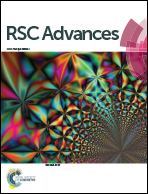Candle soot coated nickel foam for facile water and oil mixture separation†
Abstract
Nickel foam with superhydrophobic and superoleophilic surface has been successfully fabricated via a facile two-step process. The hierarchical structure was prepared on the commercial nickel foam surface by deposition of a soot layer. After being solidified by polydimethylsiloxane, the as-prepared nickel foam showed both superhydrophobic and superoleophilic properties simultaneously. This as-prepared nickel foam as a facile device could then be applied in oil and water mixture separation.


 Please wait while we load your content...
Please wait while we load your content...